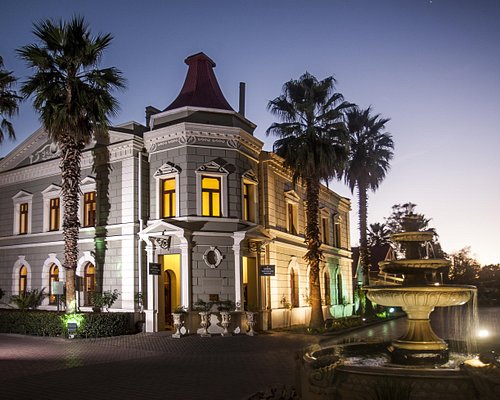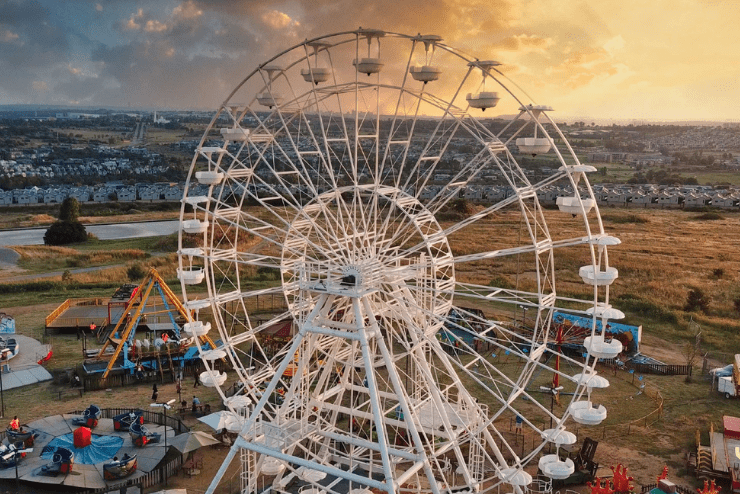Johannesburg North Attractions Fundamentals Explained
Johannesburg North Attractions Fundamentals Explained
Blog Article
Everything about Johannesburg North Attractions
Table of ContentsThe Ultimate Guide To Johannesburg North Attractions3 Simple Techniques For Johannesburg North AttractionsMore About Johannesburg North AttractionsThe Basic Principles Of Johannesburg North Attractions Fascination About Johannesburg North AttractionsJohannesburg North Attractions - Questions
The city owes its place to the existence of an even extra valuable resource: gold. The city grew on the side of the Witwatersrand Key Reef, a subterranean stratum of gold-bearing quartz-silica conglomerate that arcs for hundreds of miles under the Highveld. A lot of the gold mines in the city stopped operation in the 1970s, yet in its day the Witwatersrand gold sector represented more than 40 percent of the globe's annual gold manufacturing.Johannesburg has a warm environment. The city takes pleasure in about 8 hours of sunlight per day in both winter months and summertime.
What rain the city gets falls virtually solely in the summer months, frequently in spectacular late-afternoon electric tornados. Air pollution postures a considerable trouble, particularly in the winter season, when thermal inversions restrain the westward circulation of air from the Indian Ocean. Contamination is most severe in the densely resolved Black towns on the city's perimeter, where several locals still depend on coal for gas.

All About Johannesburg North Attractions
The equilibrium of the city is inhabited by whites. Accommodation varies in personality and top quality. Soweto is infamous for its limitless rows of municipally constructed, two-room matchbox homes, yet it additionally has a couple of thriving territories along with teeming squatter camps, where 10s of thousands live without water, electricity, or sanitation facilities.
Physical development, although rather restricted by transport, continued rapidly as migration to South Africa, and Johannesburg in particular, raised drastically. This problem was addressed in the 1930s when the car was presented in mass manufacturing to South Africa. Autos were, for the many part, confined to the rich, and permitted them to transfer to the north of the city and commute into the centre.
The majority of inadequate suburbs were combined, with inadequate blacks and whites living with each other, although the affluent residential areas were normally booked for whites. This altered with the election of the National Celebration in the 1948 political elections, that began to formalise the system called apartheid. Discrimination formally assigned which suburban areas each race could live in under the Team Locations Act.
The previous system of eleven numbered areas was reorganised in 2006. Marshalltown, as seen from the top of the Carlton Centre. The M1 and M2 run behind the buildings, and the southern suburbs extend past the freeway limit. The central city of Johannesburg is situated within the city's Region F. The estimated population of the region is 200,000, [] The number of individuals living in the inner city on an informal basis is unidentified, as lots of are illegal immigrants. Most higher-income residents and white individuals have relocated to the northern suburban areas and have actually been changed by lower-income black individuals. The joblessness, education and learning, click for more info and age profiles of the area are all unknown, as a result of the difficulty of acquiring dependable details about the location.
How Johannesburg North Attractions can Save You Time, Stress, and Money.
Yeoville and Bellevue have a mix of apartment buildings and single household systems on tiny great deals. The region is situated on a mountainous divide that runs from eastern to west.

Johannesburg North Attractions for Beginners
R. Tambo International Airport). The eastern residential areas are several of the oldest areas of Johannesburg, there are huge communities of Jewish and other European histories, the majority of the populace is English speaking. There are three golf training courses in addition to a number of safeguarded ridges with viewsites. There are a number of well-developed and up-market home entertainment and shopping areas in the east such as the Eastgate Mall and the Greenstone shopping center.
The area is primarily composed of old "matchbox" homes, or four-room houses constructed by the government, that were built to offer low-cost accommodation for black employees during discrimination. Soweto is an acronym, meaning "South Western Townships". Road after street in this location is lined with matchboxes; nevertheless, there are a couple of smaller locations where thriving Sowetans have actually constructed residences that are more comparable in stature with those in even more affluent residential areas.
Hostels are another famous physical attribute of Soweto. Originally constructed to house male migrant workers, several have actually been enhanced as residences for couples and families. The N1 Western Bypass skirts the eastern limit of Soweto. The suburb was not historically allowed to develop employment centres within the location, so mostly all of its citizens are travelers to various other parts of the city.
Not known Details About Johannesburg North Attractions
The residential locations in the northern residential areas are generally formal, with no substantial areas of informal real estate, or real estate that lacks a long-term structure. This is an established location, there is a pattern of land usage change from household to business, specifically along main arterial i thought about this roadways and around well-known nodes.
The location is well attached to road networks, particularly along the north-south our website axis formed by the M1 and N1. Roadways to the eastern and west are less well created, as there are no freeways taking a trip because instructions. Towards the northern boundary of the city, the thickness of development reduces, leaving huge areas of primitive land around Midrand.
Our Johannesburg North Attractions PDFs
The initial suburban area to the north of the central city is Parktown, which is located on a hill overlooking the inner city and Hillbrow. It has numerous affluent citizens and Edwardian-design manors, along with the Education and learning and Clinical schools of the University of the Witwatersrand. The big concrete Charlotte Maxeke Johannesburg Academic Healthcare Facility controls the horizon of Parktown.
Report this page